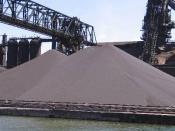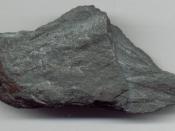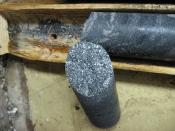Industrial case study
The production of iron and steel
Introduction: IRON
Iron is the most abundant metal and is believed to be the tenth most abundant element on earth. Iron is also the most abundant (by mass, 34.6%) element making up the earth. The concentration of iron is mainly found in the inner core to about 5% in the outer crust. Iron is a metal extracted from iron ore, and is hardly ever found in the free elemental state. In order to obtain elemental iron, the impurities must be removed by chemical reduction. Iron is also used in the production of steel. Steel is not an element but an alloy which is made up of different metals and some non-metals such as carbon.
Iron is given the symbol Fe which is the short form for "Ferrum" the Latin word for iron. The nucleus of iron has the "highest binding energy per nucleon".
This means that iron is the heaviest element that is produced through fusion (procedure of liquefying or melting of metals by heat) and the lightest through fission (A nuclear reaction in which an atomic nucleus splits into fragments). The melting point of iron is 1535ðC and its boiling point is 2750ðC. Pure iron is very rare due to the fact that it is chemically reactive and corrodes rapidly especially in moist air or at elevated temperatures. There are 4 commonly know isotopes of iron. Form A is known to be magnetic but when it is transformed into form B the magnetism disappears (but lattice remains unchanged.
Iron ore Mining: Australia
Iron ore resource is found in every State and territory in Australia. Almost 90% of identified iron ore resources (about 31.5 billion tones) are found in Western Australia including about 80% in the Hamersley province. The...


